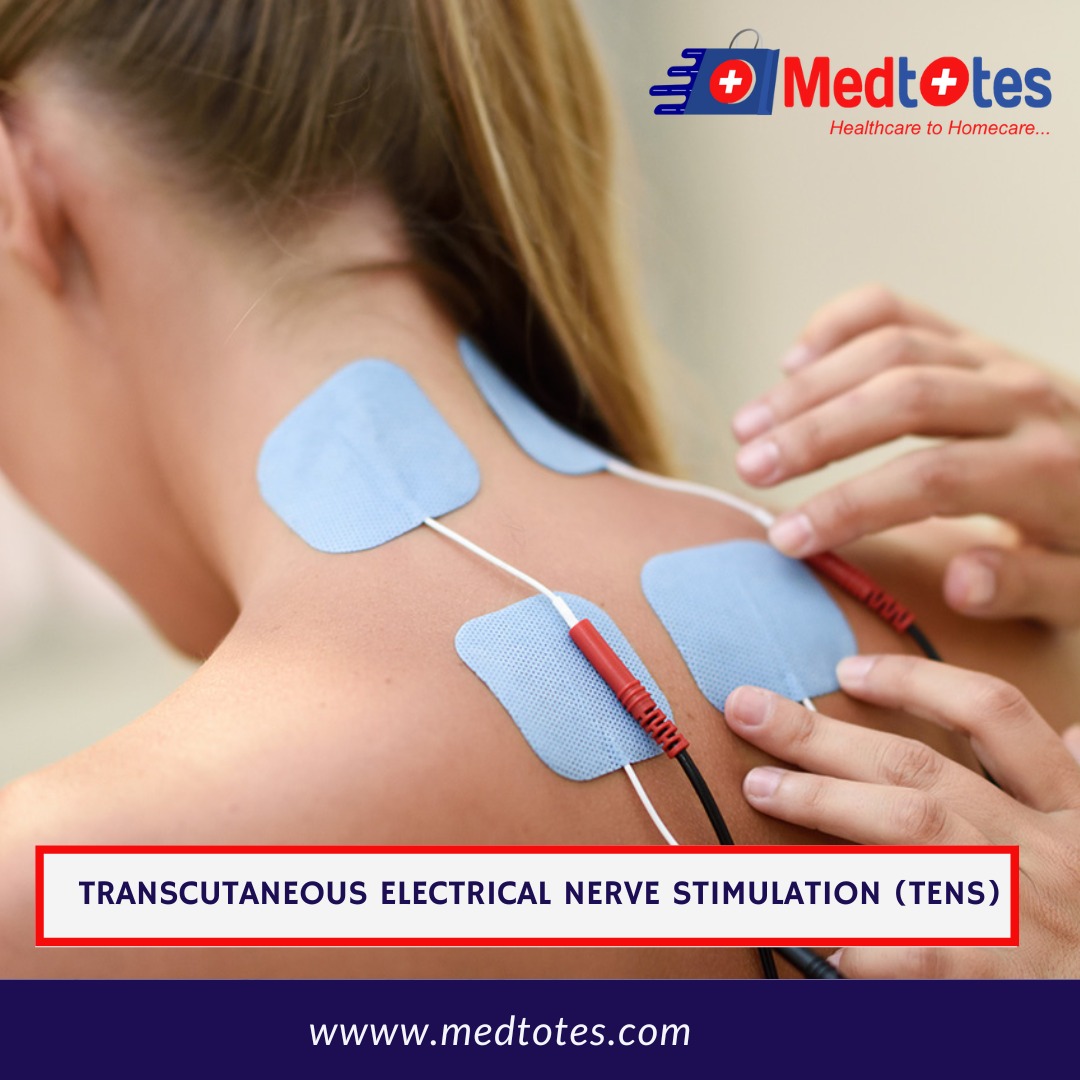Transcutaneous Electrical Nerve Stimulation (TENS)
Low-voltage electric currents are used in transcutaneous electrical nerve stimulation (TENS)
therapy to relieve pain. A tiny gadget delivers the current to nerves or areas close to them.
The TENS unit reduces or modifies your perception of pain.
What is TENS treatment (transcutaneous electrical nerve
stimulation)?
TENS is a pain-relieving procedure that employs a low-voltage electrical current. A TENS unit
is a battery-powered device with electrodes that are applied to the skin. Electrodes transmit
electrical impulses to the skin. The electrodes are placed on or near the nerves or trigger
points that cause pain.
How do TENS work?
The therapeutic benefits of TENS have been explained by two opposing theories. One idea
holds that the electric current stimulates nerve cells, causing them to block the transmission
of pain signals and therefore changing how painful something feels. The alternative view
holds that nerve stimulation increases the production of natural analgesics and opioids by
the body. The hormones then prevent the experience of pain.
What does TENS treatment (transcutaneous electrical nerve
stimulation) treat?
TENS treatment has been used or is currently being explored to reduce both short-term
(acute) and long-term (chronic) pain. The following are a few of the most common
justifications for TENS use:
Joint diseases include osteoarthritis.
All across the body, particularly along the spine, fibromyalgia makes muscles, tendons, and
joints pain and ache.
Tendinitis occurs when an inflamed or swollen muscle.
Bursitis is an inflammation of the fluid-filled sacs that support joints.
Labour pain.
Low back pain.
Pelvic discomfort that is persistent.
Diabetes-related nerve damage is known as neuropathy. The spinal cord and brain are
connected to the rest of the body through these nerves.
Peripheral artery disease is a stiffening of the blood arteries that supply the body.
What kinds of diseases and body parts should not be treated
with TENS?
TENS therapy shouldn’t be used on certain parts of your body if you have any of the
following conditions:
• If you have osteomyelitis, TB, diseased organs or wounds, or any of these conditions. TENS
therapy may contribute to the spread of infections.
• To tissue regions that have recently been exposed to radiation.
• To cause skin damage (with the exception of open wounds, when the intention is to
stimulate the healing of tissue). A qualified therapist should take the lead in these cases
since they are best able to ensure that TENS is utilised properly.
• If you have any current or previous health issues, concerns, or questions, you should always
speak to your doctor or nurse before using TENS. In front of, on the side of the neck, or over
the lips and eyes.
• Next to the reproductive organs or genitalia.
To bodily regions that don’t feel much or at all.
Why to guarantee that TENS is used safely, in persons who have difficulty speaking or who
suffer from mental health issues and are unable to provide feedback.
If you have any concerns, issues, or questions about your present or prior health before
using TENS, you should always speak to your doctor or nurse.
Conclusion:
TENS therapy is a safe and effective choice for treating a variety of illnesses since it helps to
improve function while reducing discomfort. Ask your physiotherapist if TENS treatment
would be appropriate for you if you are dealing with acute or chronic pain.
Transcutaneous Electrical Nerve Stimulation (TENS)….!!!

